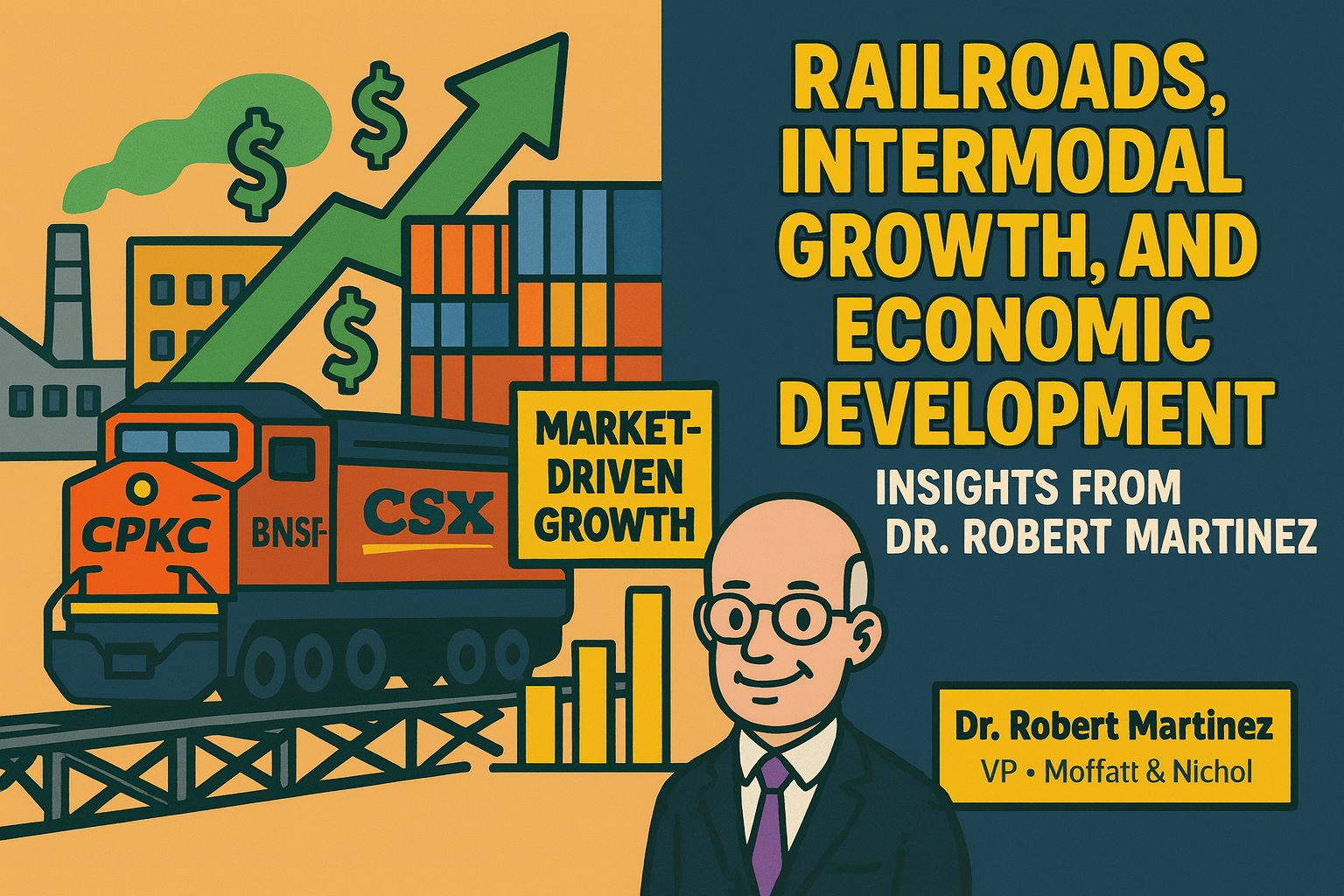Railroads, Intermodal Growth, and Economic Development: Insights from Dr. Robert Martinez

Railroads, Intermodal Growth, and Economic Development: Insights from Dr. Robert Martinez
At the 2025 SEDC Annual Conference in Oklahoma City, attendees heard from Dr. Robert Martinez, President and Vice President of Freight and Economic Development at Moffatt & Nichol, a global engineering and infrastructure consulting firm. Dr. Martinez, who has held leadership roles at the U.S. Department of Transportation, Norfolk Southern Railroad, and as Virginia’s Secretary of Transportation, brought decades of experience in rail strategy and market-based development to the stage.
Market-Driven Growth

VP Moffatt & Nichol
Martinez emphasized that his team at Moffatt & Nichol is focused solely on projects that succeed in the marketplace. “If your project depends on a policy mandate or subsidy rather than supply and demand, good luck to you,” he said. For him, rail economic development (RED) must be rooted in private market efficiency, with railroads making investment decisions based on financial hurdles and long-term viability.
Understanding Railroads
North America’s six Class I railroads—CSX, Norfolk Southern, BNSF, Union Pacific, Canadian National, and CPKC—each bring different strengths, and their capital intensity shapes how they operate. Martinez reminded the audience that railroads reinvest up to 20 percent of operating revenues annually into infrastructure, far higher than most industries. This makes site selection and network location critical for successful partnerships.
Lessons from Deregulation and Intermodal Expansion
Tracing history, Martinez pointed to the 1956 creation of the interstate system and containerization, followed by the 1980 deregulation of railroads and trucking. These shifts defined today’s freight market. Railroads compete directly with trucking, and profitability depends on length of haul and density. Intermodal—containers and trailers moved by rail—has emerged as the largest single commodity for railroads, surpassing even coal and chemicals.
Domestic vs. International Intermodal
Martinez clarified that intermodal is divided into two distinct markets:
- Domestic (53-foot containers), often tied to companies like JB Hunt or Schneider.
- International (40- and 45-foot containers), connected to ports and inland ramps.
He cautioned that railroads rarely mix these two networks at smaller facilities and stressed the importance of scale. A new ramp requires at least 20,000 containers annually of one type to be viable.
Transload Opportunities
While intermodal is attractive, Martinez noted that transload facilities—where goods transfer between conventional trucks and railcars—often provide more flexible, lower-risk opportunities. Transloads require less capital, work within existing networks, and can open long-haul rail to industries currently dependent on trucking. “If you’ve got a good site and anchor customers, transloads can be market winners,” he said.
Takeaway for Communities
Intermodal and transload strategies can transform regional competitiveness, but only when pursued with the right geography, site conditions, and market demand. Proximity to existing intermodal ramps, strong volumes, and an understanding of railroad economics are essential. Communities that align these factors can attract investment, lower transportation costs, and benefit from rail’s environmental advantages.
Dr. Martinez concluded with encouragement for economic developers: “Intermodal is a growth engine for railroads. Transloads may prove the more appropriate component of your development strategy. If you’ve got the right site and the right market, talk to us.”
